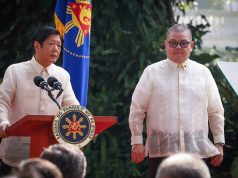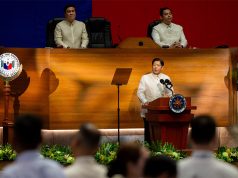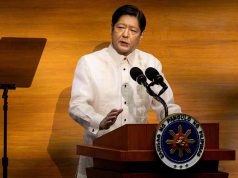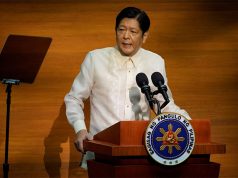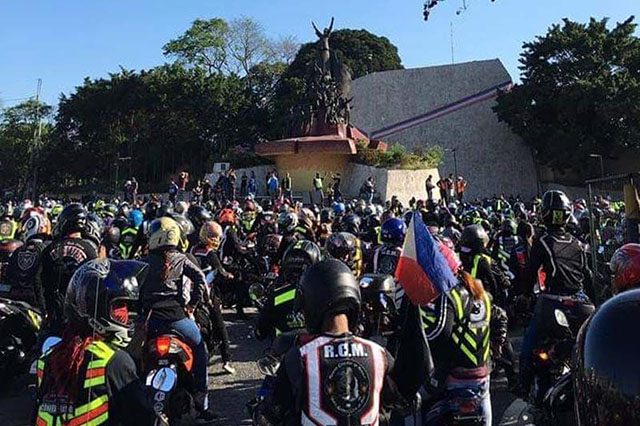
Tragedies during Ferdinand Marcos’ dictatorship were remembered on the 35th anniversary of the People Power Revolution on February 25.
Social media users recall the four-day political protest was “bloodless” while the resistance against Marcos was not.
History books normally look back at the massive demonstrations that occurred from February 22 to 25, 1986 along EDSA and praise them for being nonviolent compared to revolutions in other parts of the world.
Twitter user @shairaptrc, however, pointed out that thousands of activists were killed and tortured during the dark regime before the historic EDSA rallies.
“No, the EDSA revolt wasn’t bloodless. In fact, the events that led to the people power that ousted Marcos was one of the bloodiest in Philippine history with thousands of activists tortured, killed and disappeared. It would be a huge disservice to the people to say otherwise,” she said.
no the edsa revolt wasnt bloodless. in fact the events that led to the people power that ousted marcos was one of the bloodiest in ph history with thousands of activists tortured, killed & disappeared. it would be a huge disserve to the people to say otherwise. good morning 🙂
— shaira (@shairaptrc) February 25, 2021
Similarly, Philip Jamilla of human rights group Karapatan remembered that bloodshed came first before the well-known peaceful revolution.
“Yes, we must defend the memory of the 1986 People Power uprising, but we must also challenge the way it has been dominantly articulated as a four-day “bloodless” uprising, because the anti-dictatorship resistance was not a singular four-day event—and it was far from bloodless,” Jamilla wrote.
“The fascist dictatorship of Ferdinand Marcos was a bloody time in our history—and many of those who dared to resist it were killed, tortured, or forcibly disappeared. Without the blood shed by the people’s martyrs, the “bloodless” 1986 People Power uprising would not be possible,” he added.
Yes, we must defend the memory of the 1986 People Power uprising, but we must also challenge the way it has been dominantly articulated as a four-day “bloodless” uprising, because the anti-dictatorship resistance was not a singular four-day event—and it was far from bloodless.
— Philip Jamilla (@pmjamilla) February 25, 2021
Similar dictatorships were imposed in neighboring countries at that time.
“We must also reject viewing Ferdinand Marcos’s fascist dictatorship as an aberration in our history. It was not: it was a consequence of imperialist crisis, and one of the many fascist dictatorships—Indonesia, Chile, Brazil, South Korea—backed by the United States at that time,” he said.
The hashtag #EDSA35 trended briefly in the morning of February 25, 2021. Filipinos shared old photos and videos of the demonstrations on social media.
Others sent links to documentaries about Marcos’ rule.
The 1986 People Power Revolution beyond EDSA. These photos were taken on February 25, 1986 in downtown Iloilo City as Ilonggos celebrate the fall of Marcos. pic.twitter.com/malF3Izxjb
— EMIL (@13thFool) February 25, 2021
Little did i know that This was Marcos’ last hurrah. I pulled out from my coverage of EDSA to cover his oath-taking at the Palace. My humble contribution to the historic EDSA People Power Revolution! Never Forget!
Thank You AP!
Copyright AP pic.twitter.com/FMmsBuVOyY— bullit marquez (@BullitMarquez) February 24, 2021
Briefly reminiscing the era of impunity
According to Amnesty International, a total of 107,240 human rights violations were recorded during Martial Law.
These comprise 70,000 imprisoned, 34,000 tortured and 3,240 killed.
In Philstar.com’s “31 Years of Amnesia,” historian Michael Charleston Chua explained that with the suspension of the writ of habeas corpus, many civilians were detained, even those not part of the opposition.
“Or minsan nakita ka lang doon sa rally, hindi ka naman talaga kasali, napadaan ka lang, puwede ka hulihin… At siyempre kapag ikaw ay ‘di nagustuhan ang mukha mo ng militar, puwede ka ng kunin lang, kasi suspendido nga ang tinatawag na writ of habeas corpus,” Chua was quoted as saying.




